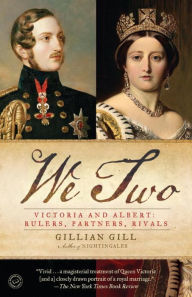Ross King was born in Canada in 1962 and completed a PhD in English Literature at York University in Toronto. He is the author of two novels and Brunelleschi’s Dome, (voted Non-Fiction Book of the Year by American Independent Booksellers in 2001). He lives in Oxford.
Michelangelo and the Pope's Ceiling
by Ross King
Paperback
- ISBN-13: 9781620408407
- Publisher: Bloomsbury USA
- Publication date: 10/14/2014
- Pages: 384
- Sales rank: 37,206
- Product dimensions: 9.20(w) x 6.10(h) x 1.10(d)
What People are Saying About This
.
The riveting story of how Michelangelo, against all odds, created the masterpiece that has ever since adorned the ceiling of the Sistine Chapel.
Customers Who Bought This Item Also Bought
-
- Judgment of Paris: The…
- by Ross King
-
- Seven Days in the Art World
- by Sarah Thornton
-
- Color: A Natural History of…
- by Victoria Finlay
-
- The Lost Painting: The Quest…
- by Jonathan Harr
-
- 50 Paintings You Should Know
- by Kristina LowisTamsin Pickeral
-
- Art History For Dummies
- by Jesse Bryant Wilder MA, MAT
-
- Andrew Carnegie
- by David Nasaw
-
- Provenance: How a Con Man and…
- by Laney SalisburyAly Sujo
-
- Heresy
- by S. J. Parris
-
- 50 Artists You Should Know
- by Thomas KoesterLars Roeper
-
- Love Over Scotland (44…
- by Alexander McCall SmithIain McIntosh
-
- Metamorphoses: A New…
- by OvidCharles MartinBernard Knox
-
- Masters of Deception
- by Al SeckelDouglas R. Hofstadter
-
- Caravaggio: A Life Sacred and…
- by Andrew Graham-Dixon
-
- We Two: Victoria And Albert:…
- by Gillian Gill
-
- Henry VIII: The King and His…
- by Alison Weir
-
- Mother Angelica: The…
- by Raymond Arroyo
Recently Viewed
When Pope Julius II wasn’t riding off to subdue some unfortunate neighbor during the endless Papal Wars, he was hounding poor Michelangelo--"When will you have this chapel finished?"--to make good on his three-thousand-ducat commission and reveal to an expectant world the mysteries of the Creation. If you’ve put those impatient words in the mouth of Rex Harrison, who brought Julius to the screen in The Agony and the Ecstasy, you’ll know that poor Michelangelo worked alone, racked by the demons of poverty and artistic insecurity, to say nothing of the Inquisition. Not so, writes King (Domino, p. 1337, etc.). It’s not that the pope was a patient or gentle man--from time to time he gave Michelangelo a good clout, and he once threatened to throw the recalcitrant artist off his scaffolding. But Michelangelo was being paid very well for his work and had a squadron of skilled craftsmen at his disposal, and it was they, not he, who spent years on their backs staring up at the ceiling, paintbrush in hand, while Michelangelo was ducking off to check on other commissions in Florence and Bologna. King supplies a richly nuanced view of Michelangelo and company’s day-to-day life in the Sistine Chapel, placing it in the context of the overall Renaissance, a time of plenty of bloodshed and intrigue, but also of extraordinary artistic accomplishment thanks to the likes of Julius, Cesare Borgia, and other noteworthy hotheads. Disputing the now accepted view that Michelangelo was gay (there is no good evidence, King argues, that he had much of any kind of sex life), King examines Michelangelo’s considerablevirtues and quirks--one of which, his understandable desire not to show a work until it was done, was to get him into much trouble with his eminent patron.
Readers looking for the lite version of this tale may still want to fire up the VCR and watch Charlton Heston chew the scenery. Those seeking a richer understanding of Renaissance art-making will find this a pleasure.


















